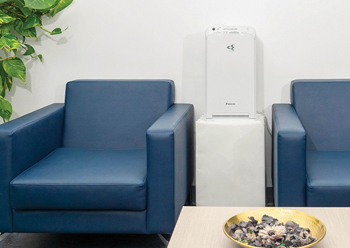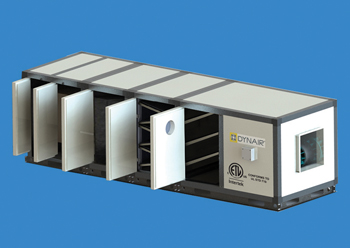
.jpg) Press fittings can help reduce the margin for human error.
Press fittings can help reduce the margin for human error.
Cities in the Middle East continue to grow and emerge as global hubs, with the construction industry playing an essential role in this transformation. The current Covid-19 crisis has impacted virtually every sector of the economy; however, the governments’ response has been proactive and well positioned the region for future growth.
While project activity has reduced, it continues on in the background. When it comes to the construction industry, both pre-Covid-19 and currently, it seems to be presented with a common challenge – a growing skills gap along the supply chain.
While there is no shortage of labour, there is a shortage of skilled labour. As the demand for projects picks up, construction companies may find it increasingly difficult to find skilled workers to fulfil this need. However, there are ways in which we can close the gap through training and increased collaboration between contractors, consultants and product manufacturers.
 |
|
Franks ... “By investing in training as an industry, we can start to make a difference.” |
The effects of Covid-19 have been driving margin squeezes, and consequently, cost-saving efforts. The first to go is usually training programmes and initiatives. As companies in the region seek to become increasingly competitive during this time, they are looking to drive operational efficiency to deliver or maintain increased profitability. However, cutting back on training is not necessarily the right approach. Instead of reducing training budgets, they should consider investing in employee development, which can deliver cost-saving benefits in the long run. If employees are working to a standard that is high and consistent, this can increase efficiency and mitigate potential risks. Addressing the skills gap immediately can enable industry-wide progress.
Manufacturers continue to innovate, delivering new products and methods into the market. Innovation will not stop, however, if labour is not trained to leverage it, the skills gap will widen. There is generally hesitation in the industry to adopt new technologies because labour may not be qualified to use it. However, without integrating new technologies into our projects, we miss out on the many benefits they can bring. Value engineering in this way can actually cause problems on site such as delays.
By investing in training as an industry, we can start to make a difference. While there are currently organisations that offer training initiatives, some of these solutions may drive change only in the long term.
The question that remains is: what can we do right now to upskill today’s workforce? Manufacturers can offer on-site training, which can be carried out either before or during installation and promote best practices.
The way we can overcome the reluctancy to adopt new innovations is through education on how combining these products with proper training can actually help to reduce human error.
There are challenges with accepting these new products when it comes to their cost in relation to traditional products. However, from a cost benefit standpoint, mitigating the potential cost of failure may be worth higher initial investment. Furthermore, construction is not just a cost-driven industry. It’s also about creating spaces that support sustainable development, human health and general wellbeing. It is only when we open our eyes to more a holistic view of the industry, that we can then realise the benefits of innovative products.
In my experience with Conex Bänninger Middle East, press fittings are an example of a product that can help reduce the margin for human error. Unlike traditional plumbing fittings, they eliminate the need for hot works on site, thus reducing the chance of fire accidents. This type of product requires shorter training time in comparison to the traditional method of brazing. These products also deliver higher joint integrity and improved repeatability than products that use brazing.
Whether it’s through training or integration of new products, it’s clear that there is room for improvement in the construction industry. These two factors go hand in hand to help address challenges perpetuating the skills gap in the region.
Once we start to change our outlook on the industry, construction becomes about more than the cost-effective delivery of projects. It is an industry which uses innovation in a way that directly impacts our daily lives. From design to procurement to installation and even maintenance, we must shift our perspective from an early stage along the whole supply chain to create products and systems that work cohesively to fulfil a common goal.
By collaborating along every step on the supply chain, we can feel more empowered to deliver projects that are completed on time, within budget and in accordance with specification in addition to creating spaces that are safer, stronger and more sustainable.
* Conex Bänninger is a leading innovator and manufacturer of fittings and valves for plumbing, heating, air conditioning and refrigeration.

















.jpg)













 (1).jpg)
















































